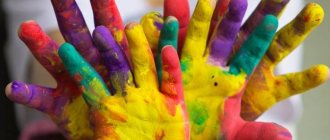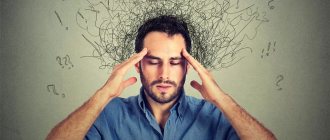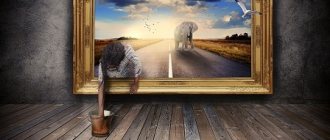Guest post. The author is Evgeniy Shcherban , who has appeared on Lifehacker not for the first time. If you want to learn how to awaken your creative impulses and what you need to do to help your inner creator grow and develop, be sure to take the time to read this article. You will not regret!
“I’m not a creative person, I’m not given this,” many of us say, looking with admiration at the caricatures of street artists or listening to a long-haired hippie singing a Radiohead song in transition. But there is good news: the latest scientific research suggests that all people are the same and that there is a creator in each of us. Therefore, the phrase “I’m not a creative person” is just a convenient excuse for laziness .
The myth of a creative streak was cultivated and carefully guarded among bohemians for a long time. Artists, musicians, actors, designers and even average copywriters like to look like they belong to a different breed, and while working they are moved by at least the hand of God. The standard of a creative personality is a cross between Lady Gaga and Aguzarova, who yesterday was going to fly to the moon, today she is destroying the charts with a new song, and tomorrow she is giving an interview about the benefits of meditation in a funny kokoshnik. And to start creating, we need to go through nine circles of hell, drink at least three times, undergo drug rehabilitation and go to meditate in the Tibetan mountains.
Scientific research rejects any division between the creative and corporate working classes
What can we say if in the modern corporate environment there is an artificial division into “creative” and “corporate” types who relate to each other like Gryffindor and Slytherin students. However, almost all studies of creativity that have been conducted over the past 50 years reject this division: the creative muscle has nothing to do with genetics, intelligence, or personality traits.
For example, during an experiment at the Institute for Diagnostics and Personality Research (IPAR), scientists invited several dozen successful representatives of various creative professions to the conference. Over the course of several days, they took many tests, which did not really clarify where to look for creative inclinations. The only common features of the subjects looked like this: balanced personal characteristics, above average intelligence, openness to new experiences and a tendency to choose difficult options. As you can see, nothing special.
The role of creativity
Why does an ordinary person, not an artist or musician, need creative abilities? Here are their main advantages:
- they help even an ordinary manager to take a non-standard approach to solving work issues;
- if they are available, it is easier to find yourself some hobby that will bring pleasure and, possibly, income;
- such skills help create real masterpieces, without exaggeration;
- creativity helps a lot in your personal life, in relationships with your loved one;
- a creative person is often a good parent, with his own special approach to raising children.
The famous psychologist E. Torrance, USA, believes that for a successful career, everyone needs to have creativity.
It is such a specialist who productively perceives diverse information and always offers non-standard methods. A leader who has creative potential always finds original solutions to problems.
There is no such thing as a creative personality type
Then stubborn guys in white coats began to look for creative inclinations in a person’s personal qualities: a huge amount of information was collected about the outstanding creators of the 20th century, after which everyone passed the virtual test “five-factor model of personality.” Scientists expected that creative people would have a bias in one of five personality characteristics (openness to experience, conscientiousness, extraversion, agreeableness and neuroticism), but again the finger in the sky - among the subjects there were neurasthenics, extroverts, friendly drunks, and many more Who. Conclusion: there is no creative personality type.
Having abandoned psychology, they began to look for the creative muscle in the human brain. Researchers did not give a damn about Einstein’s request for cremation and immediately after the death of the genius they began to study his skull. And again disappointment: the brain of the famous physicist was no different from the brain of a professional baseball player or a homeless person who had been hit by a car. The third round of slingshot shooting at airplanes is completed, the scientists are “on fire” with a score of 3:0.
There is no correlation between the gene code and creativity
When psychologists, physiologists, and simply everyone who cared were left with nothing, genetics, which had previously unsuccessfully tried to find the gene for old age and the gene for excess weight, began to solve the problem. To rule out differences in genes and the influence of upbringing, the scientists studied only families with twin children. Researching the Connecticut Twin Registry since 1897, Marvin Reznikoff's group assembled a team of 117 twins and divided them into two groups (identical and fraternal). The results of two dozen tests showed that there is no correlation between the gene code and creative abilities. 4:0, and it's almost Argentina versus Jamaica.
Over the past 50 years, there have been a wagon and a small cart of such experiments. In his book “The Muse Won’t Come,” David Brooks provides a dozen more references to unsuccessful attempts to find the nature of the creative muscle and concludes that creative thinking, like any other skill, can be improved through training.
Training to improve creative thinking
Morning Pages
Old as time, but an effective method. As soon as we wake up, we grab a notepad and pen and start writing. It doesn't matter whether it's a story about Godzilla walking through Tokyo, an essay about a warm blanket, or a sleepy analysis of the geopolitics of Mongolia. The main thing is to just write and not think about anything. The norm for morning writing is three notebook pages or 750 words. You can use the 750 words resource and drum on the keys, but experienced scribblers advise doing it the old fashioned way - with pen on paper.
What if
This is not even a method, but a simple question that Stanislavsky forced any aspiring actor to ask. “What if” can be applied to any familiar object, part or action. For example, what if the story in a book was told with pictures? This is how the comic came about. Or what if, instead of world news, we told what ordinary people care about? This is how the yellow press appeared.
This method perfectly develops imagination and is actually the trigger for any creative process. And it’s a lot of fun to ask strange questions. What if all people drank blood? What if a funny man with the habits of a dictator from a banana republic became the president of the country?
Word crushing
In the adult brain there is a rigid system of symbols that, at the first opportunity, likes to evaluate and label everything around. As a result of such automation, the brain saves resources, but this is also the main reason for narrow and stereotyped thinking. By coming up with new words, we force our brain to turn off rational thinking and turn on imagination. The technique comes from childhood and is extremely simple: we take any two words, combine them into one and then try to imagine what it would look like in life. Bath + toilet = bathtub, Kim + Kanye = Kimye.
Torrens method
The method is based on doodles - scribbles of the same type that need to be turned into a drawing. On a piece of paper we draw identical symbols in a row (a circle, two circles, a nail, a cross, a square, etc.). Then we turn on our imagination and start drawing.
Example. The circle could be Captain America's shield, a cat's eye, or a nickel, while the square could be a haunted house or a piece of art. It develops not only imagination, but also persistence in searching for ideas, since each new doodle is a competition with oneself.
Focal object method
The method is to find connections between the main idea and random objects. For example, we open a book on a random page, grab 3-5 words that first caught our eye, and try to connect them with the subject we are thinking about. A book can be replaced by a TV, a video game, a newspaper, or something else. Works great when the thought process moves by inertia.
Gordon's analogies
This is not the easiest to learn, but a very effective method. William Gordon believed that the source of creative ideas lies in the search for analogies, which he divided into four groups.
- Direct analogy : we are looking for an analogy to an object in the surrounding world. On a scale from your room to the country.
- Symbolic : we are looking for an analogy that will describe the essence of the object in a nutshell.
- Fantastic analogy : we come up with an analogy, taking the limitations of objective reality out of the equation.
- Personal analogy : we try to take the place of the object and look at the situation through the eyes of the object. For example, how does the chair on which we sit live?
Indirect Strategies
This is a very strange and interesting way that Brian Eno and Peter Schmidt came up with to bring a tired brain out of a creative stupor along secret paths. The essence of the method: we have 115 cards with advice written on them. Moreover, the advice is quite strange: “Remove ambiguities and turn them into details,” “Massage your neck,” or “Use an old idea.” The trick is that there are no direct instructions for action, and in each advice two people can see two different solutions to the problem. You can make the cards yourself and pour them, for example, into a vase or use online tips. For example, here.
Goals and objectives of the course
In general, the topic of the development of creative thinking can be explored almost indefinitely, finding in it ever new facets and shades. Therefore, we will not try to find the “Holy Grail” for which everything was started, but will point out several, in our opinion, the most important goals worthy of painstaking work on the creative component of your mind.
So, developed creative thinking and imagination will allow you to :
| 1 | Think outside the box. Thought patterns and clichés have long lost their relevance and only reduce a person’s effectiveness, no matter what it concerns. Developed creative thinking helps to find unexpected solutions to complex problems, overcome difficulties faster, work more productively, achieve more, and achieve results where others fail. |
| 2 | Achieve success. Starting a business, saving money, investing, negotiating, public speaking, making deals - everywhere you need a creative approach, because... It is he who makes a person head and shoulders above others, forms his reputation and authority, and helps him become an indispensable member of the team. However, creativity is useful even for a loader in a warehouse or an office manager in a small company. |
| 3 | Develop intelligence. Most truly creative people have high IQs. This means that the development of creativity has a cumulative effect on the development of intellectual abilities. You become smarter and more erudite, your horizons expand and your knowledge base expands, new neural connections are formed in your brain, which, among other things, has a beneficial effect on your health and even prolongs your life. |
| 4 | Be interesting. Creative thinking makes a person an interesting interlocutor with whom you can talk on different topics and have an unusual time. A sense of humor, communication skills, and the ability to constructively resolve conflicts also develop. Creative people, like a magnet, differ favorably from ordinary people, attract others and win loyal friends. |
| 5 | Develop spiritually. Creativity is always going beyond boundaries, and that is why, completely influencing a person’s personality, it makes him spiritual, looking deeper into things, seeing more than others. It’s no wonder that many creative people live in harmony with themselves and the world, clearly understand their mission and purpose, do what they love and draw happiness from every day they live. |
Whatever goals you set for yourself, be it purely pragmatic things, such as advancing your career, obtaining a doctorate degree or developing your own business, or something “out of this world”, for example, finding the meaning of life, creating unique objects of art or writing a novel, creative thinking everywhere will only play into your hands and will allow you to get closer to your dream much faster.
However, before you begin to develop creative thinking and creativity, you need to understand what exactly they are. Therefore, we want to continue with a little conversation about the meaning put into these concepts.
General recommendations for the inner creator to grow and develop
Stick to a daily routine
In his latest work, What I Talk About When I Talk About Running, Haruki Murakami debunks the myth of the creative lazy person, talking about the fact that a strict daily routine (getting up at 5 a.m., bedtime at 10 pm) became the main catalyst for his performance. The mind is inclined to be capricious and find excuses for its own laziness, and following a routine takes it out of its comfort zone and teaches it to turn on half a turn.
Don't neglect other creative activities
Draw, write, learn to play the guitar or dance. Any creative activity keeps the brain in good shape, and alternating them switches attention and allows you to find answers in rather unexpected places.
According to research, more than a third of Nobel Prize laureates in literature were engaged in another form of art - painting, theater or dance. Einstein called music his second passion and, if he had not become a physicist, most likely would have become a violinist.
Don't give up
When things don't get off the ground, persevere. For example, the writer Rody Doyle says that during a stupor he begins to pour out on paper the nonsense that comes to mind. After a while, the brain stops pushing and protesting and simply turns off, releasing streams of thoughts. And Hemingway, when he sat down to write a novel, could write dozens of versions of the first sentence until he found the one he believed. Then he developed the action from it.
Don't get hung up
If persistence does not help, we go from the opposite. Take a walk, do something distracted, communicate with other people. There is a theory according to which everything has long been invented, and the creative process lies only in the combination of these ideas. And if the answers are hidden within us, we just need to tune in to the right wave and hear them. You can sit in the sun in the lotus position, concentrate on washing the dishes, walk through the forest listening to ambient music, or go jumping at a rock concert. The main thing is to do things that allow us to turn off our internal dialogue and focus on the moment.
Treat creativity like a game
Creativity is, first and foremost, fun. Don't take it too seriously. Now I will explain why. In 2001, an experiment was conducted at Maryland College in which students had to guide a mouse through a maze drawn as in childhood. The students of the first group walked forward towards the piece of cheese (positive attitude), while the second group ran away from the owl (negative attitude). Both groups completed it in the same amount of time, but the students of the second group started avoidance mechanisms, and the second group took, on average, 50% longer to solve the problems that followed the maze than the students of the first group.
Just start
Many of us in childhood dreamed of becoming musicians, artists or actors, but over time, a pragmatic approach to life pushed these dreams further into the mezzanine. Betsy Edwards has a theory that for most people today, the left side of the brain becomes dominant as they age. She is responsible for analytical thinking, the symbol system and the mode of action, and every time we try to learn to play the guitar or draw, we hear her voice, which advises us to put this bullshit aside and do something useful.
At first it will be difficult to step over the inner critic, but if you have the courage and desire, then over time his voice will become quieter, and criticism in the style of “you draw like an asshole” will be replaced by something more constructive. Getting started is the hardest thing.
Important points
Developing a creative streak in yourself is not a simple or quick process. Self-confidence, desire, and hard work are essential components of success.
But there are other important points:
- listen to yourself, perhaps your intuition knows exactly how you can apply creative skills;
- try to find time, relax and think about what exactly you would like to do in life;
- The answer can be found in your childhood - remember what you loved to do, what brought you maximum pleasure, what was exciting?
- when you find your topic, start accumulating information and impressions - read about what you love, communicate with like-minded people, broaden your horizons;
- determine when the muse comes to you - in the morning or evening, before bed, or on a clear day;
- create, and be prepared for criticism, don’t be afraid of it - everyone has gone through this;
- Stress, fatigue and nervous tension can hinder creativity, so try to relax and forget about your problems.











